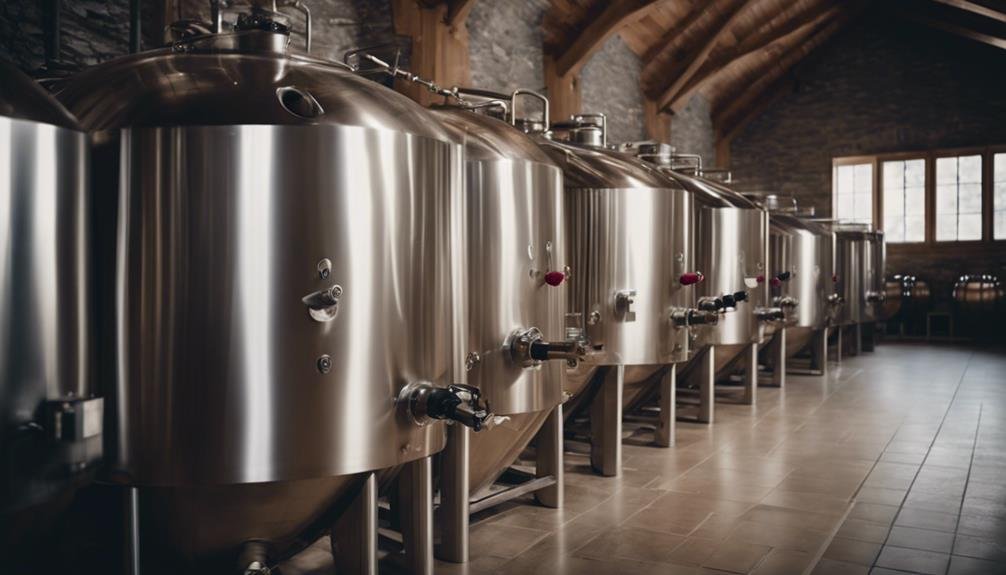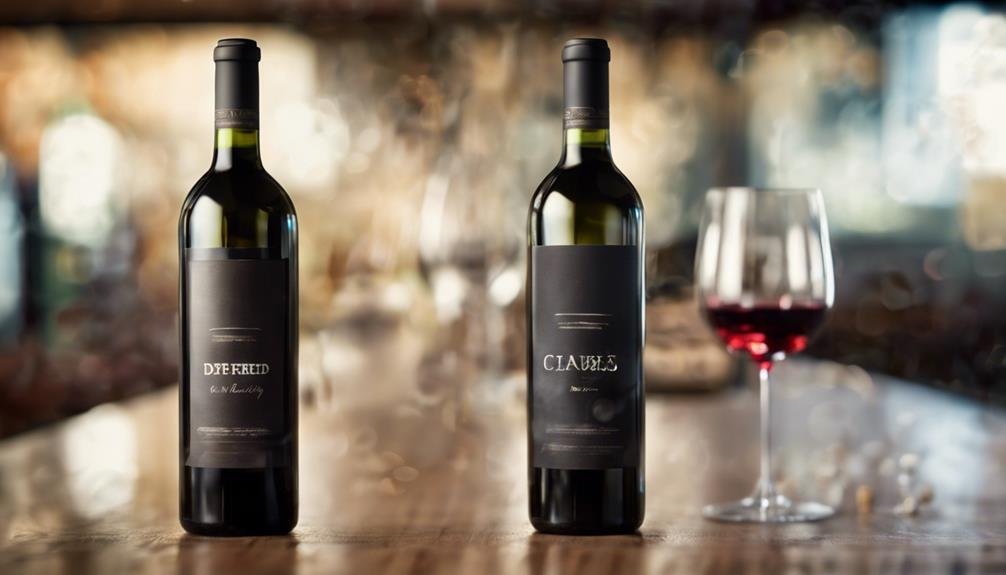In the world of wine, Old World traditions clash with New World innovations, shaping winemaking globally. Old World regions like France, Italy, and Spain value historical practices and terroir, while New World areas in America focus on modern methods and technology. Grape varieties, climate, and winemaking philosophies all contribute to the debate. New World wines stand out for bold flavors, higher alcohol content, and fruitiness, appealing to millennial preferences. On the other hand, Old World wines boast complexity and subtlety, catering to traditionalists. Understanding these differences enhances appreciation for the diverse world of wines.
Regional Characteristics and Influences
Exploring the intricate tapestry of regional characteristics and influences in the world of wines reveals a diverse spectrum of flavors, traditions, and terroirs that distinguish Old World, New World, and Ancient World winemaking regions.
Terroir importance, the unique combination of soil, climate, and topography, plays a significant role in shaping the grapes and, consequently, the wines produced in each region.
Historical traditions deeply rooted in Old World regions like France, Italy, and Spain have set the standard for winemaking practices.
New World regions, such as those in North and South America, showcase a blend of innovation and tradition, adapting techniques to suit their climates and consumer preferences.
Ancient World countries like Turkey, Armenia, and Greece bring ancient winemaking techniques into the modern world, adding a touch of history to the global wine industry.
Grape Varieties and Global Impact
The diversity of grape varieties cultivated globally plays a pivotal role in shaping the intricate tapestry of the wine industry. Different grape varieties not only contribute to the flavor profile of wines but also reflect global wine trends and varietal popularity. Cross-cultural winemaking influences have led to the spread of certain grape varieties across continents, impacting the styles of wines produced. Below is a table highlighting some popular grape varieties and their global impact:
| Grape Variety | Global Impact |
|---|---|
| Cabernet Sauvignon | Widely grown in Bordeaux, Napa Valley, and Australia. Known for rich, full-bodied red wines. |
| Chardonnay | Popular in Burgundy, California, and Australia. Produces a variety of styles from crisp to creamy. |
| Malbec | Originally from France, now thriving in Argentina. Known for bold, fruity red wines. |
Understanding the influence of grape varieties on wine production is essential for appreciating the diverse array of wines available worldwide.
Winemaking Philosophies and Practices

With a rich history rooted in tradition and innovation, winemaking philosophies and practices showcase the diverse approaches employed by producers around the world.
The dichotomy between traditional vs modern techniques and terroir vs technology is a central theme in the winemaking industry. Old World producers often prioritize traditional methods that have been passed down through generations, focusing on the unique characteristics of the land, known as terroir.
In contrast, New World winemakers lean towards modern techniques, embracing technological advancements to achieve consistency and efficiency in their production processes. This ongoing debate between honoring heritage and embracing progress highlights the dynamic nature of winemaking philosophies and practices, ultimately shaping the diverse array of wines available to consumers globally.
Climates Role in Wine Diversity
Understanding how climate influences wine diversity is fundamental to appreciating the nuanced flavors and characteristics found in different wine regions. Climate variations play a significant role in shaping flavor profiles, affecting grape development and ultimately terroir impact.
New World regions typically experience warmer climates, leading to riper fruit flavors, higher alcohol content, and bolder profiles. In contrast, Old World regions often have cooler climates, resulting in higher acidity levels, more finesse, and subtler characteristics.
The balance between warmth and coolness in a region directly impacts the grape's ripeness, acidity, and overall flavor complexity. By recognizing the importance of climate in the winemaking process, enthusiasts can better understand and enjoy the diverse array of wines available from around the world.
Consumer Trends and Market Dynamics

What factors drive the evolving landscape of consumer preferences and market dynamics in the wine industry?
Millennial preferences play a significant role in shaping current trends, with this demographic showing a strong inclination towards New World wines. These wines, known for their bold flavors, higher alcohol content, and fruit-forward profiles, cater well to the preferences of younger consumers.
On the other hand, traditionalists often lean towards Old World wines, appreciating their complexity, lower alcohol content, earthy flavors, and subtle tannins.
Market strategies are heavily influenced by these consumer preferences, with producers adapting their production styles and marketing approaches to meet the demands of different target audiences. Understanding and catering to these varying preferences is key for success in the competitive wine market.
Frequently Asked Questions
How Do Different Soil Types Affect the Taste of Wine?
Different soil types influence wine taste through terroir's impact on grapevine growth. Climate influences grape ripeness and acidity. Granite-rich soils may produce wines with minerality, while limestone soils can lead to wines with finesse and elegance.
What Role Does Oak Aging Play in Wine Production?
Oak aging in wine production impacts flavor profile through imparting aromas, flavors, and textures. It adds complexity, richness, and vanilla, spice, or toast notes. Oak influence varies by duration and type of oak used, contributing to wine's character.
Are There Any Health Benefits Associated With Drinking Wine?
Wine, particularly red wine, contains antioxidants like resveratrol that may offer health benefits when consumed in moderation. Drinking wine in moderation is associated with potential cardiovascular benefits, but excessive consumption can have adverse effects on health.
How Do Sustainable Practices Impact Wine Quality?
Sustainable practices in winemaking, such as organic farming and biodynamic approaches, positively impact wine quality by preserving terroir influence, mitigating climate change impact, and ensuring long-term environmental sustainability. These methods enhance wine complexity, purity, and expression.
What Are Some Emerging Wine Regions to Watch Out For?
Emerging wine regions to watch include England, Canada, Uruguay, and China. Climate influences grape varieties, impacting ripeness and flavor profiles. Terroir plays a key role, affecting winemaking techniques and unique regional characteristics. These regions offer exciting potential for wine enthusiasts.
Conclusion
In the intricate tapestry of the global wine industry, the contrast between Old World and New World varieties adds a layer of complexity and richness to the wine landscape.
Through a delicate dance of tradition and innovation, winemakers from different regions craft wines that reflect their unique terroir, grape varieties, and winemaking philosophies.
As consumers continue to explore and appreciate the diverse array of wines available, the world of wine remains a dynamic and evolving domain of discovery and enjoyment.